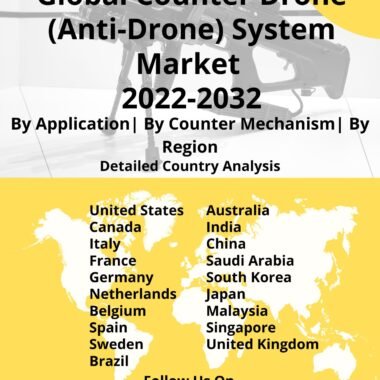Description
Global Defense Electrical Systems Market
Defense electrical systems encompass a wide range of electrical equipment, technologies, and systems used in the defense sector to support military operations, enhance capabilities, and ensure the functionality of various defense platforms and infrastructure. These systems are critical for communication, surveillance, targeting, navigation, power generation, electronic warfare, and more.
Communication Systems:
Military communication systems enable secure and reliable communication among troops, vehicles, aircraft, and command centers. They encompass radios, satellite communication systems, encryption technology, and data networks.
Navigation and Positioning Systems:
Navigation systems like GPS (Global Positioning System) are integral for accurate positioning, navigation, and targeting of military assets in various environments.
Radar Systems:
Radar technology is used for detection, tracking, and identifying targets in the air, on the ground, or at sea. It plays a crucial role in air defense, surveillance, and early warning systems.
Power Generation and Distribution:
Reliable power generation and distribution systems are essential for military bases, installations, and deployed operations. They include generators, power grids, and backup power solutions.
Electronic Warfare Systems:
Electronic warfare systems involve technologies for electronic warfare and countermeasures. These include jamming systems, electronic countermeasures, and electronic warfare support systems.
Sensors and Sensor Networks:
Various types of sensors, such as infrared sensors, acoustic sensors, and seismic sensors, are used for situational awareness, target detection, and threat assessment.
Command and Control Systems:
These systems facilitate decision-making by providing real-time information to military commanders. They integrate data from various sources and help coordinate forces and assets.
C4ISR Systems:
Command, Control, Communications, Computers, Intelligence, Surveillance, and Reconnaissance (C4ISR) systems integrate various technologies to provide comprehensive situational awareness and enable effective command and control of military operations.
Electronic Countermeasures:
These systems are designed to counter enemy electronic warfare efforts, including jamming, spoofing, and interference with communication and navigation systems.
Avionics Systems:
Avionics encompass the electronic systems used in aircraft for navigation, communication, flight control, and monitoring of aircraft health.
Unmanned Systems Electronics:
The electronics in unmanned aerial, ground, and maritime systems enable remote operation, communication, and data transmission.
Cybersecurity Systems:
As digital systems become more integrated, defense electrical systems also include cybersecurity measures to protect sensitive information and networks from cyber threats.
Sensor Fusion and Data Analytics:
Sensor fusion combines data from multiple sensors to provide a comprehensive understanding of the operational environment. Data analytics play a role in extracting actionable insights from large volumes of data.
Directed Energy Weapons:
Directed energy weapons, including lasers and high-powered microwaves, use electrical energy to engage targets. These systems are being developed for defense purposes.
Major factors driving Defense Electrical Systems Growth
The increasing reliance on information and data in modern warfare was driving the demand for advanced communication, cyber, and electronic warfare systems, which are essential for information dominance and disruption of enemy systems. Modern military operations involve interconnected platforms and systems, requiring robust communication and networking capabilities to ensure seamless coordination and information sharing. The evolving threat landscape, including electronic warfare and cyberattacks, was driving the need for sophisticated defense electrical systems capable of countering and mitigating such threats.
Trends influencing the Defense Electrical Systems Market Size
The trend toward network-centric warfare was driving the demand for advanced communication and networking solutions to ensure seamless connectivity between platforms and troops. The battlefield is becoming increasingly digitized, with a focus on digital communication, data exchange, and real-time information sharing. Defense electrical systems need to support this digital transformation. The trend toward sensor fusion and comprehensive situational awareness required advanced electrical systems for processing and integrating data from various sensors. Defense electrical systems were being designed with modular and open architecture to enable flexibility, interoperability, and easier upgrades.
Defense Electrical Systems Market Forecast & Dynamics
The defense electrical systems market was projected to experience growth due to several key factors driving demand for advanced electrical technologies in the defense sector. These factors included the modernization of military capabilities, the integration of cutting-edge technologies, the need for enhanced communication and data-sharing capabilities, and the rise of new operational domains like cyber and space.
Defense Electrical Systems Market Analysis for Recent Developments
The Defense Innovation Unit (DIU) of the Department of Defense (DoD) chose GM Defense, a division of General Motors, to develop an energy storage device. The Stable Tactical Expeditionary Electric Power (STEEP) program’s criteria will be satisfied by the GM Defense solution. By assisting tactical microgrid and energy management capabilities in remote areas, STEEP aims to lessen the DoD’s dependency on fossil fuels as its main energy source and the logistical burden that goes along with it. The Ultium Platform, GM’s cutting-edge electric vehicle propulsion architecture, will be used by GM Defense to create a scalable and flexible energy storage system that meets the tactical energy needs of the warfighter.
The Market holds a critical position in advancing military capabilities, representing a pivotal nexus where cutting-edge technology meets the evolving needs of defense forces worldwide. Electrical systems in defense encompass a wide array of components, from power distribution and communication systems to electronic warfare and radar systems. This market is witnessing substantial growth driven by the imperative to enhance connectivity, operational efficiency, and the integration of advanced technologies across military platforms.
The adoption of electrical systems in defense is characterized by advancements in miniaturization, artificial intelligence, and cyber resilience. The integration of these technologies contributes to the development of smart and adaptive defense systems capable of addressing contemporary threats, including cyberattacks and electronic warfare. Collaborations between defense contractors, technology firms, and research institutions are fostering innovation and driving the development of sophisticated electrical systems. As geopolitical tensions persist and the nature of warfare evolves, the Global Defense Electrical Systems Market in 2023 underscores the importance of staying at the forefront of technological advancements. It reflects a commitment to providing defense forces with state-of-the-art electrical systems that optimize communication, intelligence, and overall operational effectiveness in the face of dynamic and multifaceted security challenges.
Key Companies





